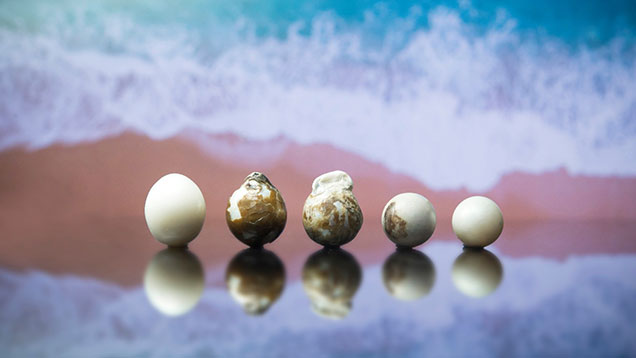A Study on Improving the Surface Appearance of Low-Quality Pinctada maxima Bead Cultured Pearls
March 24, 2021

Pearls are evaluated based on seven value factors, which include size, shape, color, luster, surface, nacre quality, and matching. Manufacturers often increase the perceived value of low-quality pearls by improving the appearance of one or more of these factors. In this study, the Bangkok laboratory examined five low-quality bead cultured pearls sourced directly from a local pearl factory and characterized their features before and after processing. Real-time microradiography (RTX), energy dispersive X-ray fluorescence (EDXRF), and Raman spectroscopy were utilized to check potential differences in nacre thicknesses, fluorescence reactions, and chemical and mineral compositions.
The results are available in a study titled “A Study on Improving the Surface Appearance of Low-Quality Pinctada maxima Bead Cultured Pearls.” The authors concluded that methods used to improve the appearance of low-quality pearls were not always successful, and the level of success might not be economically viable for manufacturers.
Nanthaporn Nilpetploy is a senior staff gemologist, Kwanreun Lawanwong and Promlikit Kessrapong are analytics technicians, and Areeya Manustrong is a staff gemologist, in the pearl department at GIA in Bangkok. Nicholas Sturman is a consultant to GIA based in Bangkok.



